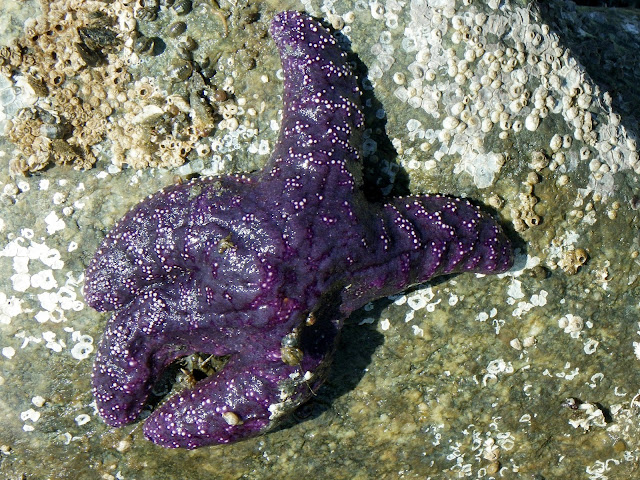 |
| About 4 inches of aquarium front. |
The spots in the water are bubbles from the pump and the air stone (the big blobs and the hard-looking rods), fragments of algae looking for a place to settle down, copepods (mostly tiny streaks in random directions) and leftover shrimp pellet fragments (these will feed the smaller anemones and the barnacles).
Animals present: two hairy hermits, eight pink-tipped green anemones (which look yellow under artificial light), three Asian mud snails (Batillaria attramentaria), one channeled dogwinkle (Nucella canaliculata), one limpet, barnacles (two species), several unidentifiable tentacles or worms or edges of half-hidden critters; some of these may be tiny orange-striped green anemones. A vague brownish shadow in the background, upper left, is the edge of the plumose anemone. The oyster shell on the right harbours a large flatworm on its underside. In the blurry sand and broken shells in front, a couple of amphipods blend in completely until they move.
The Japanese nassa snails have hidden themselves underneath the sand again.
Plants: bright green algae that grows on every surface, including the glass, pink encrusting algae on the oyster shell and the hermit's adopted shells, and - look! _ on the hairs on the hermit legs, orange algae (on the oyster and barnacle shells). On the rock in centre front, a deep red encrusting algae, probably the winter stage of Turkish washcloth (Mastocarpus papillatus). In back, the enthusiastic Rose seaweed (Rhodymenia californica), something orange, probably bits of leftover kelp holdfast, glimpses of eelgrass and sea lettuce.
This is why I keep a stool pulled up so that I can sit with my nose to the glass.

















































